Do Zinnias Attract Bees? Definitely! Find Out Why!
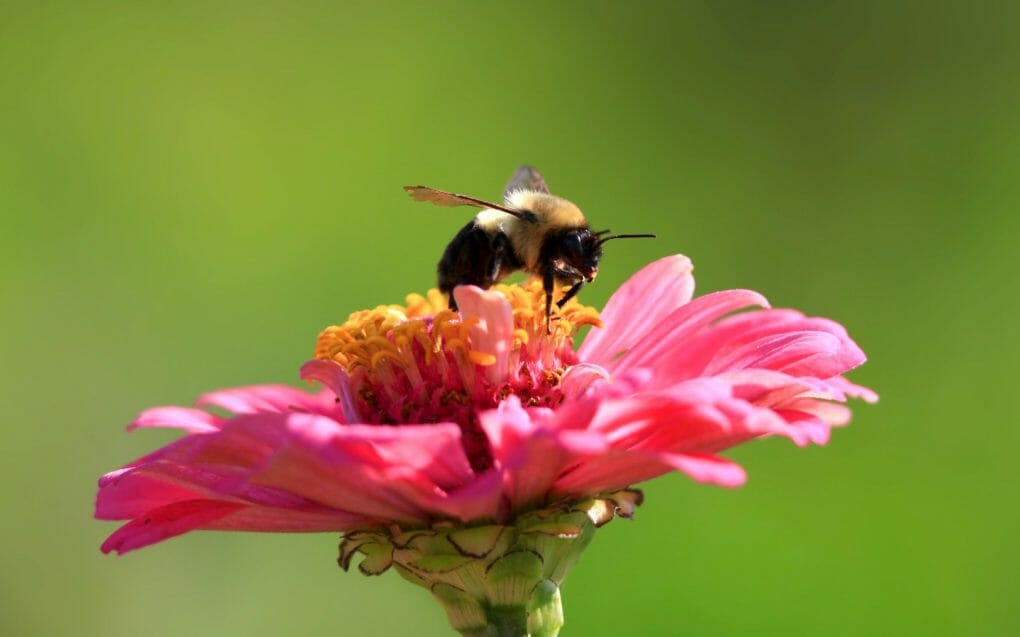
Zinnias are a favorite flower of honeybees. These beautiful flowers attract bees despite the fact that bees cannot see the color red. This is likely due to the petals’ ultraviolet markings and the apparent food reward on offer.
They could be a good addition to your garden if you want jewel-like flowers that also draw pollinators. The pinks, oranges, reds, yellows, and greens are cheerful. They drop by frequently to enjoy the sunshine and a nectar snack.
Foraging honeybees love the nectar in zinnia flowers. These blooms are low to the ground and full of wide, colorful petals. They bloom in the late summer and early fall, will add some delightful late-season color to your garden, and lure bees back for months.
There are many kinds of solitary bees, and they are all drawn to zinnia flowers, just like honey bees and bumble bees. Tiny species of bees may gather nectar and pollen from the disk flowers of zinnias, but they are easily overlooked due to their size compared to the rest of the flower heads.
You can always count on zinnias to bring the hummingbirds and bees you’ve always wanted to your garden, no matter when you plant them. There is a good reason why zinnias and daisies share a similar appearance.
Zinnias are the ideal flower for a novice gardener because they bloom in just two months from seedling to maturity with minimal effort on your part. Flowers from these annuals can have either a single or double row of petals and can be any color in the spectrum. They bloom late in the season, giving pollinators an energy boost right before the cold sets in.
Table of Contents
Factors that Make Zinnia Attractive to Bees
Colors of Blue and Purple
It has been discovered that bees have a keen eye for the colors blue, purple, and violet and are especially drawn to them. They have a limited range of color vision, missing only red. This is why you’ll find a lot of flowers that bees love in the range of violet to blue.
Full of Sweet Nectar and Pollen
Flowers need to make either sugary nectar or protein-rich pollen for bees to visit them. Though most flowers do, some produce nectar in far smaller amounts than others, making them less appealing to a busy bee. If you’re looking for flowers that fit the bill, try some of the options below.
Worker bees go to flowers to get pollen and nectar. The pollen’s protein, fats, and nutrients feed the young and the whole colony during the winter. The bees convert nectar into honey, which is their energy source and keeps the colony alive during the foraging seasons.
Bees are drawn to flowers because their nectar glands make sweet nectar, usually found in the bloom. All flowering plants that need pollinators have changed over time to help them get pollinated.
Single Flowers
Bees need to get to the flower where the nectar and pollen reside by crawling into the flower’s core. Layered flowers are less desirable for bees because they make it more difficult for the bee to reach the flower’s core and because the extra petals develop from mutant organs that would have produced nectar.
Zinnia Varieties that Attract Honeybees
You could plant one of these types of zinnia in your garden to lure honeybees:
Zinnia Profusion Series
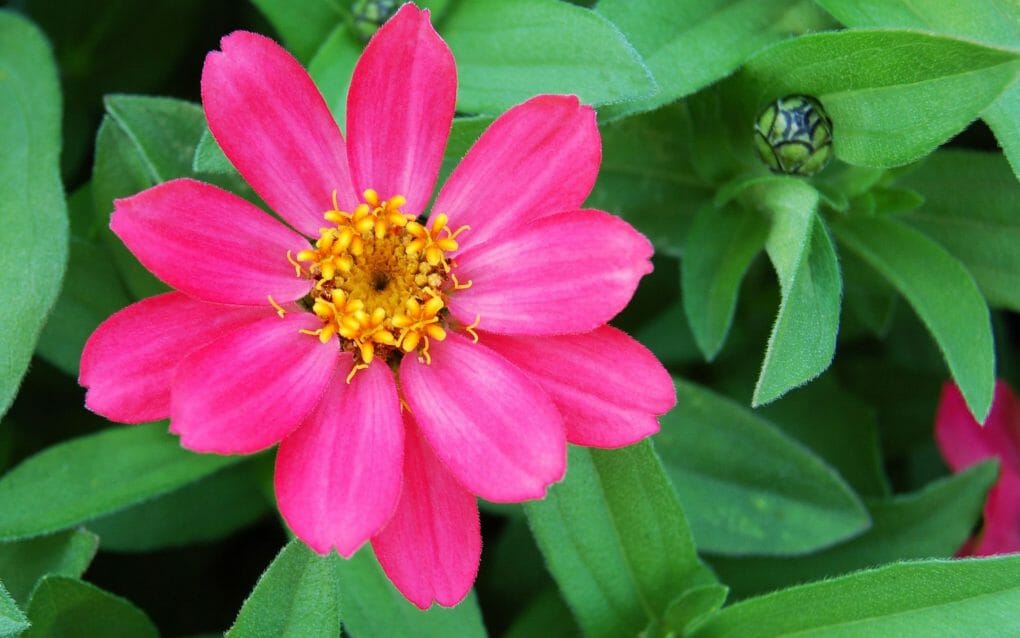
The Zinnia Profusion series crosses the Zinnia elegans and Zinnia angustifolia species. The large flowers of elegans were crossed with the ability of angustifolia to resist disease. Interspecific hybridization is when two species from the same genus get together and have offspring. They bloom all summer and well into the fall when the weather gets colder, and their color starts to fade. The Profusion series of zinnias is resistant to powdery mildew, a common disease that affects zinnias. But have no fear; the disease is purely cosmetic and poses no danger to the flowers or pollinators.
Zinnia elegans Giant Double Mixed
This Zinnia elegans Giant Double Mixed features long, stunning petals that are a striking purple-violet. This mixed variety is perfect for adding an eye-catching touch to any garden or container.
Zinnia elegans Pulcino Mixed
In the summer, the plants are dense and bushy, covered in double and semi-double flowers that last a long time and have bright colors. When there are a lot of them in a bed, they look amazing.
Zinnia elegans Sprite Mixed
Zinnia elegans is now grown in many different types, which are grown as bushy annual bedding plants in bright red, orange, and deep pink colors. Single varieties are appealing to insects that spread pollen, especially hoverflies. Zinnias do best in hot, dry places, so plant them in a sunny border with well-drained soil.
The “Sprite Mix” plant grows well in our climate. The plants have pink, red, and orange-yellow flowers that are half double. They make a great flowers to cut.
Zinnia elegans Cresto Mixed
Citrus-colored, rounded blooms last long on tall, sturdy stems. Perfect for making borders taller or giving cut flower displays a little more life.
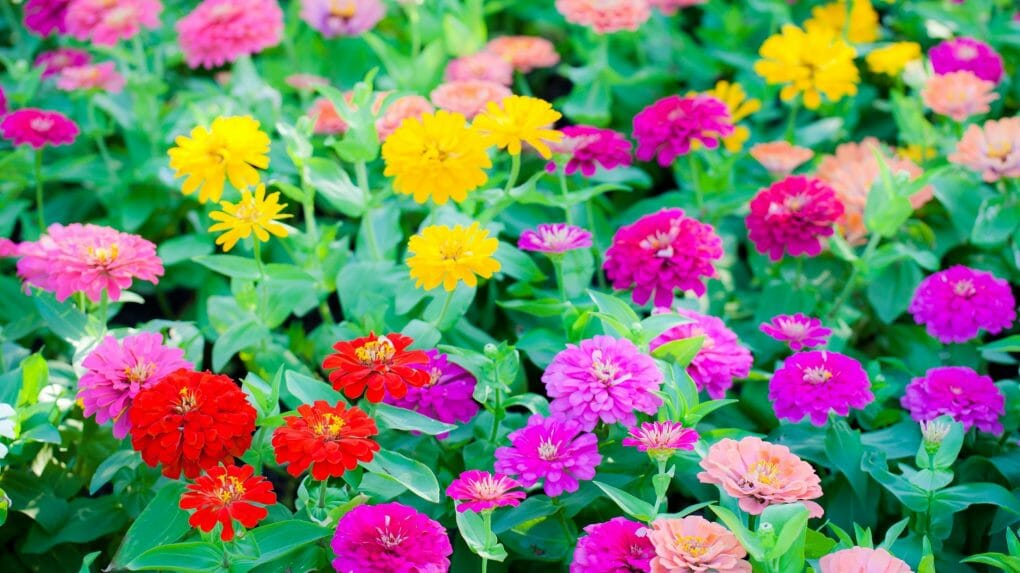
Zinnia ‘Profusion Orange’
These plants each have one orange blossom. The flowers are about 2 to 3 inches long and look like cherry flowers. The plants will be about 18 inches tall and 20 inches wide when fully grown. These plants only need good soil and water when it doesn’t rain. They don’t need much care and are easy to grow. They bloom all season and don’t need to be deadheaded.
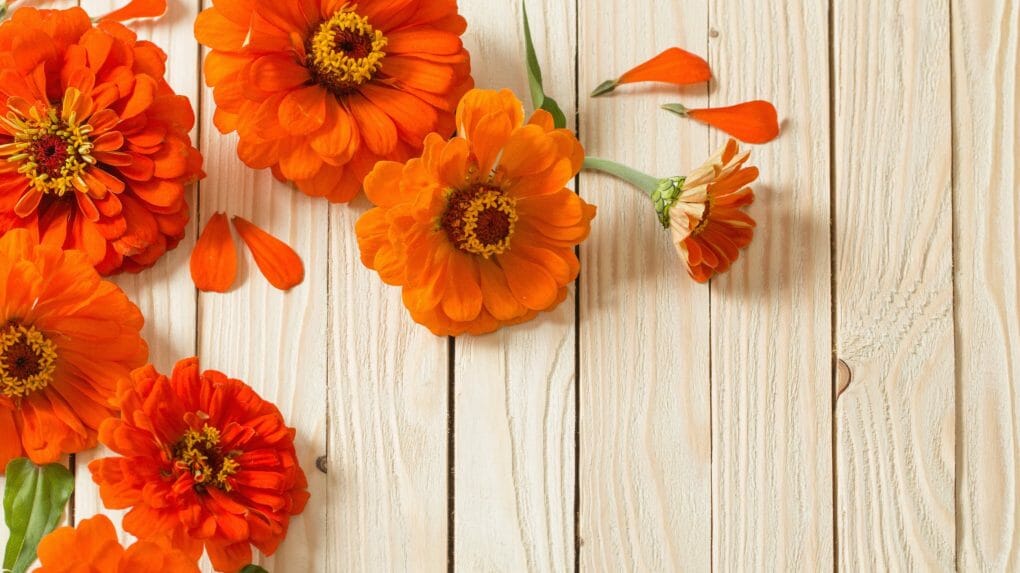
Zinnia ‘Zinderella Lilac’
Zinderellas are the first zinnias with scabiosa flowers that come in many colors. The bright lilac-colored blooms are topped with a dark eye and measure 212 inches. Most flowers are double, but some are off-type, half-double, or single. Flowers are great additions to arrangements of cut flowers. Plants reach heights of 24 to 36 inches.
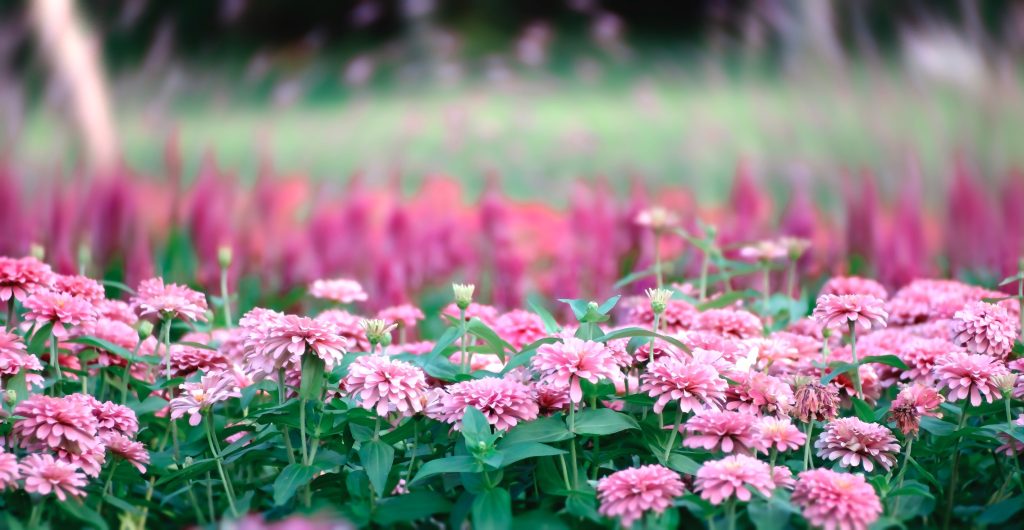
Zinnia ‘Zinderella Purple’
A new variety of zinnia with scabiosa flowers has been enhanced to have multiple tufted centers with an amethyst tint that rises over the ringed petals. Some solitary blossoms, as well. Easily grown in open, fertile settings, this summer garden staple makes for a stunning addition to bouquets and flower arrangements.
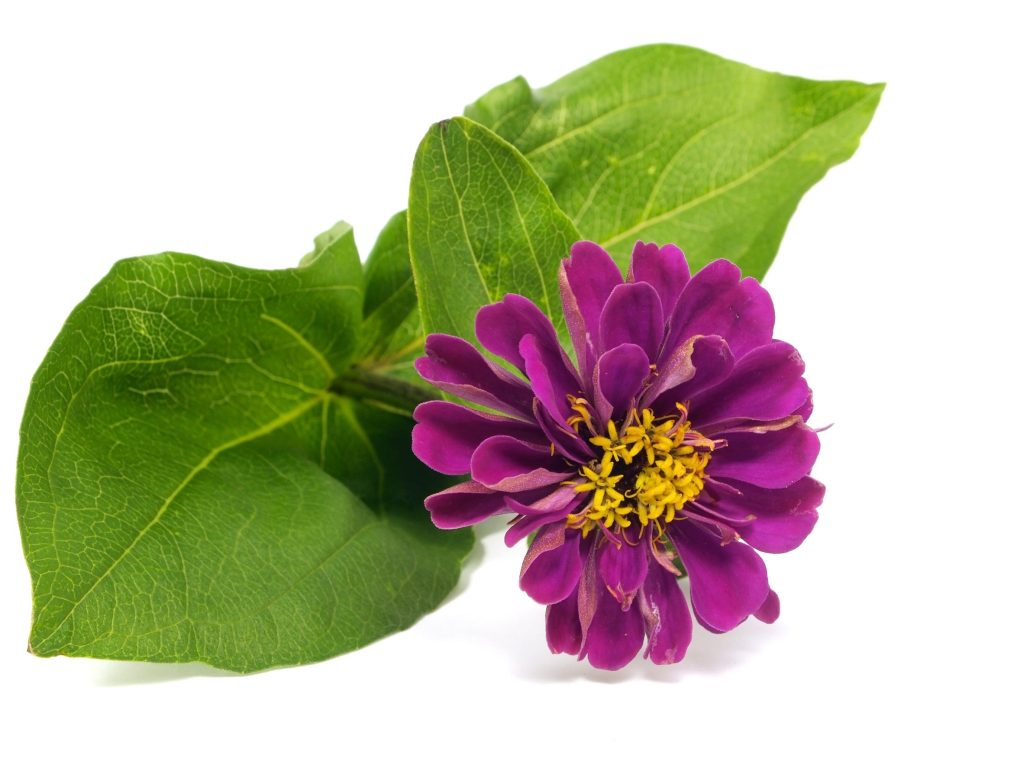
Zinnia elegans ‘Uproar Rose’
The pink blossoms are roughly 4-5 inches in diameter and are extraordinarily large and uniform, making them absolutely gorgeous. This zinnia has a knack for becoming the focal point of every garden in which it is planted. It’s a plant that can be cut and kept for later use in the season.
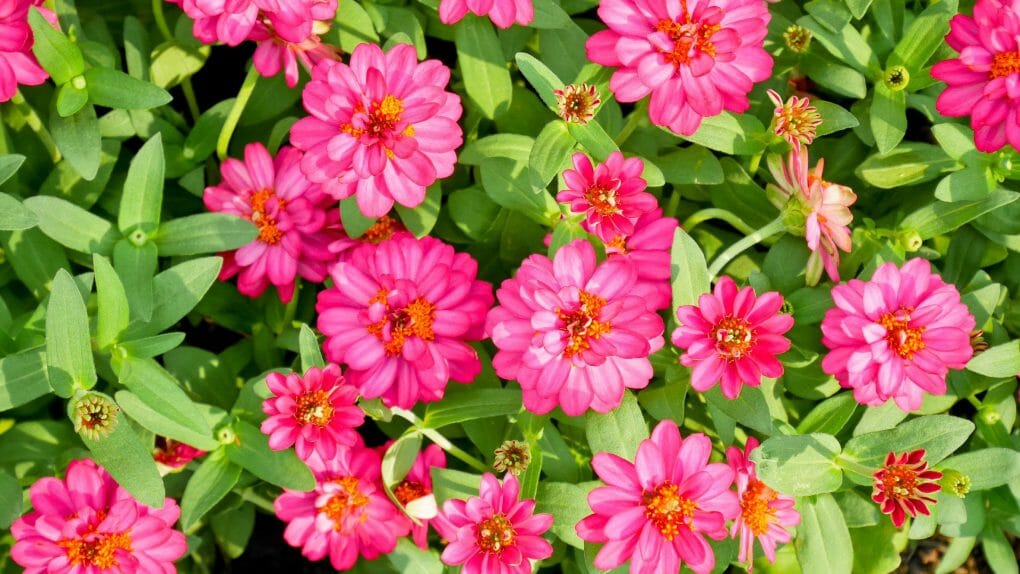
Zinnia ‘Whirligig Mixed’
Whirligig has brightly colored, 3-4 inch, solitary to semi-double flowers that resemble pinwheels. The blossoms come in a rainbow of hues, and the tips of their petals often contrast with one another. With their robust stems, these flowers will give your summer bouquets an extra oomph of color and style. Whirligig Mix zinnias can reach a height of 24 inches and a width of 12 inches.
Ways to Encourage Bees to Visit Your Zinnia
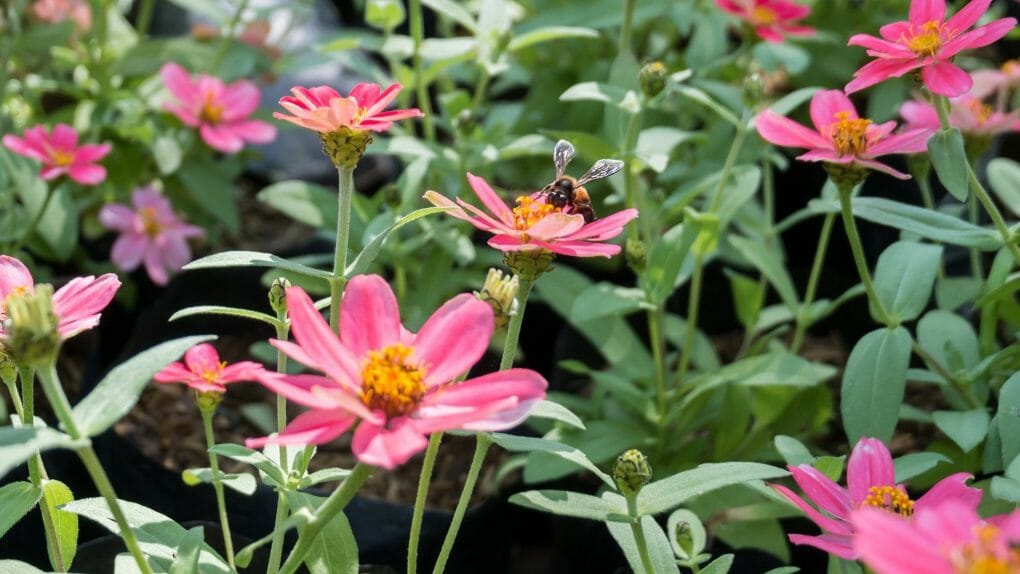
Plant a Wide Variety of Species
If you want to attract a wide variety of pollinators, you should grow plants that bloom at different times of the year. To entice a wide variety of pollinators, a garden should feature trees and shrubs with flowers of different sizes and shapes.
Do Not Use Pesticides
The reduction of bee populations worldwide is largely due to the widespread use of pesticides, which also damage many other pollinators and wildlife species.
Consider adopting holistic pest management approaches like hand-picking, companion planting, crop rotation, and row covers to control pests instead of conventional pesticides, which can harm many beneficial organisms.
Create Habitat
Even in the cleanest yards, wild bees can’t find the materials they need to build their nests. You can give birds a good place to nest by keeping a small brush pile, dry grasses and reeds, and dead wood.
Plant Native Species
Planting wildflowers and native plants on your property give native bees access to their natural food source and resources for building nests. Native bees are in danger, like the well-known (and invasive in North America) honeybee.
Although honeybees are wonderful, we want to ensure that we aren’t stifling the native species by solely growing their preferred flowers.
Supply A Water Source
It can make all the difference to provide pollinators with a little dish of water to sip from.
Give insects a place to land by placing rocks that protrude above the water’s surface. It will work just well if you already have a birdbath.
Leave the Stumps of Dead Trees in Your Garden
Dead trees are home to many insects, animals, and fungi in the wild, but people often want to get rid of them and take away this important service.
You might want to leave an old tree stump in your garden for bees and other insects that dig into the wood. These insects will then pollinate your garden.
